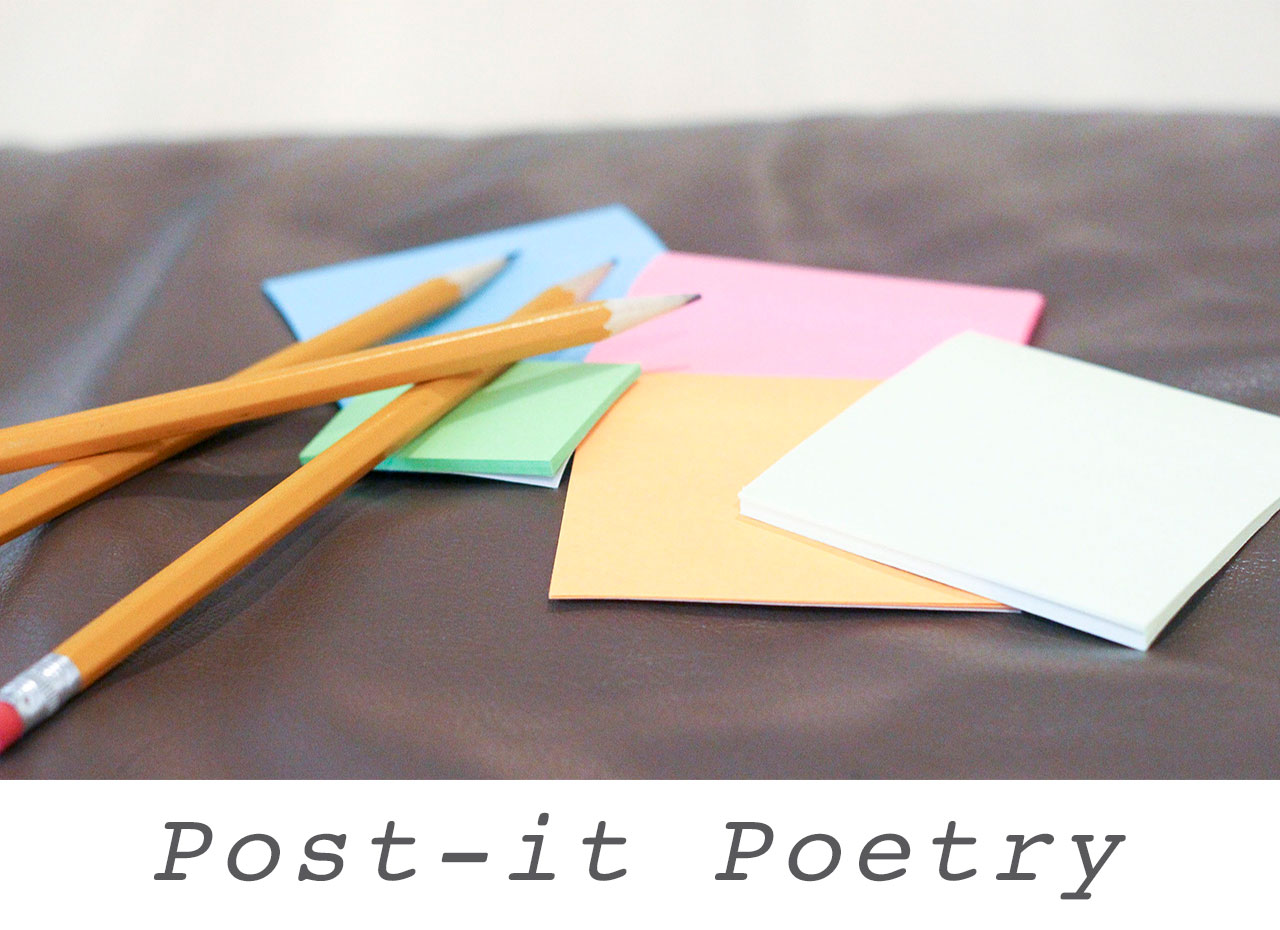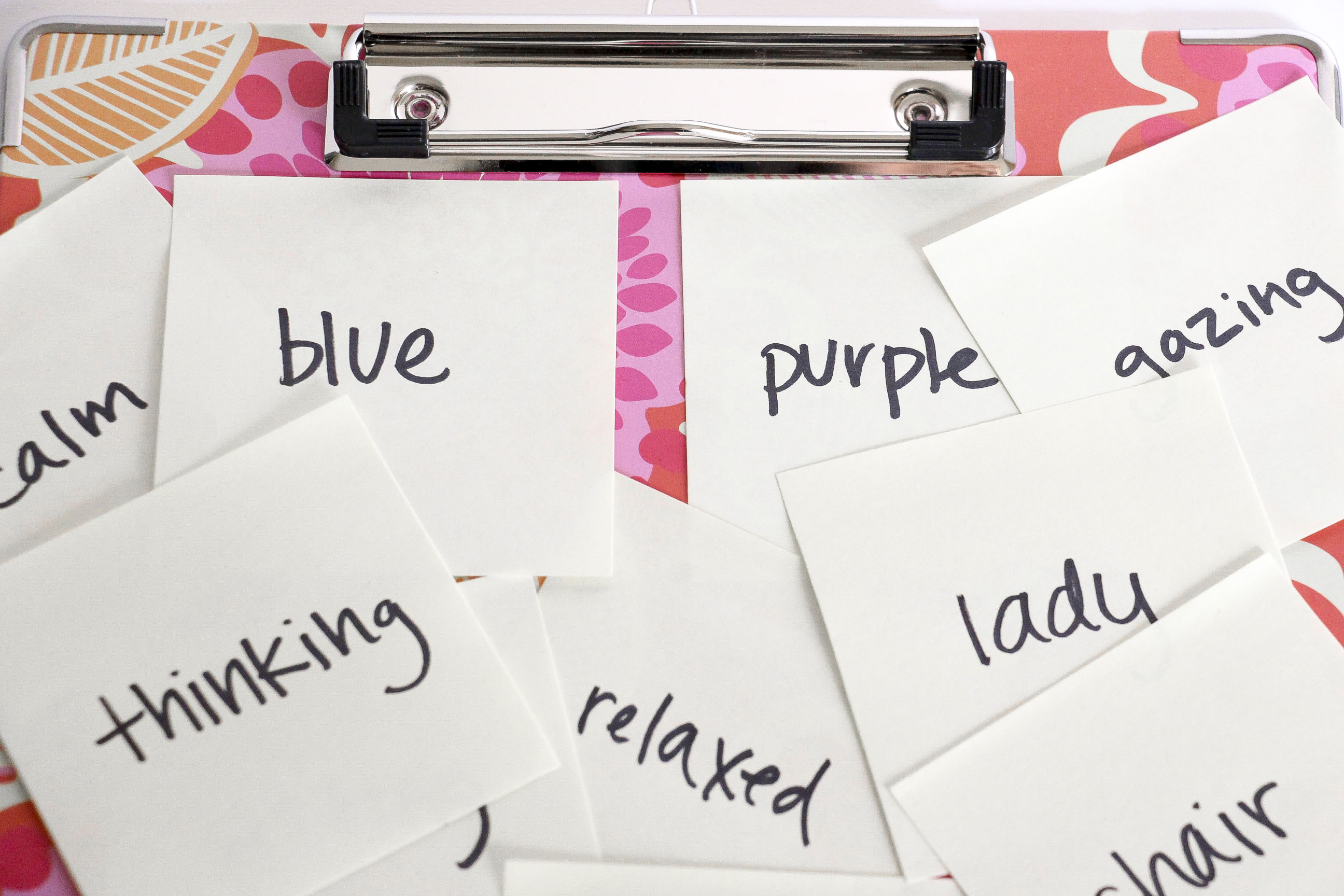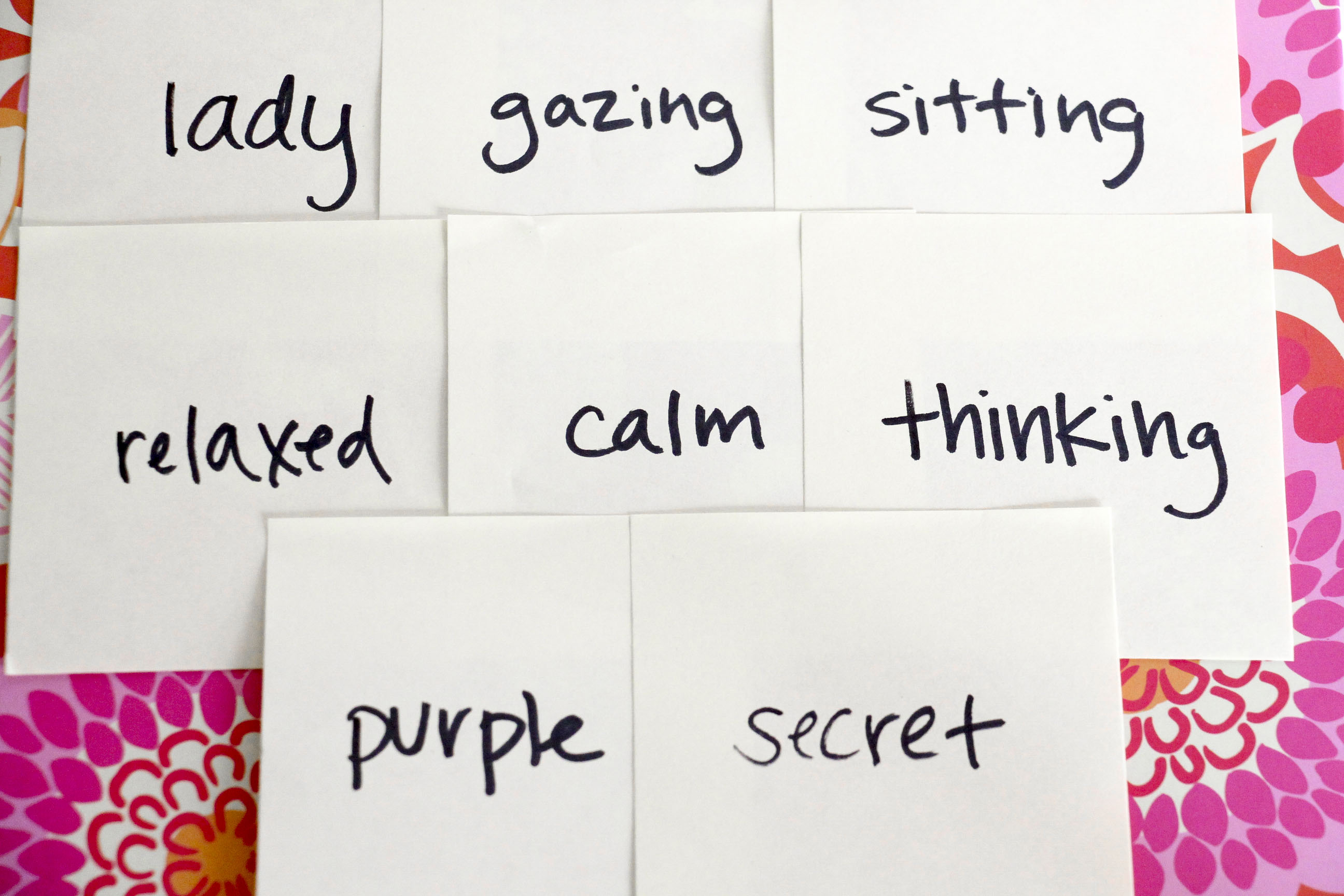Post-it Poetry
 Write, peel, stick. Write, peel, stick. There’s something incredibly satisfying to me about jotting ideas down on Post-It notes, and I love using them as creativity tools in the art museum. Especially for those of us who feel more comfortable crafting with words rather than sketching lines and shapes, Post-it poetry is an easy way to help children look more closely and respond to works of art. All you need is a pad of sticky notes and a pencil!
Write, peel, stick. Write, peel, stick. There’s something incredibly satisfying to me about jotting ideas down on Post-It notes, and I love using them as creativity tools in the art museum. Especially for those of us who feel more comfortable crafting with words rather than sketching lines and shapes, Post-it poetry is an easy way to help children look more closely and respond to works of art. All you need is a pad of sticky notes and a pencil!
I like to encourage kids to take the lead by having them select their favorite work of art in the gallery. Take a minute or two just to look at the artwork, then make yourselves at home—either on a nearby bench or right on the floor—and start a round of Post-it poetry.

Give each person a stack of sticky notes and take turns writing a single word or phrase on a note that describes what you see in the work of art. Continue for as long as possible without repeating words. If someone gets stuck, consider these prompts to inspire more words and phrases:
- What shapes, lines, colors, figures, objects do you see?
- What is happening?
- What is the mood of the artwork? or What feelings does this art give you?
- What do you like about the artwork?
The beauty of Post-it poetry is that your writing canvas is small (literally!). You don’t need to figure out what the artist intended or how the work fits into the overall history of art or “What It Means” (which we sometimes are tempted to do, especially with unfamiliar things). This type of response poetry is more about the viewer—what do you see? What do you feel? What do you wonder? All you need to do is write down what immediately comes to mind as you let your eyes and mind gaze.
Once you’ve accumulated a good stack of words, start arranging them into lines of poetry either on the floor or on a clipboard. The lines can be as short or long as you like, rhyming or not rhyming. You can even arrange the notes themselves into shapes!

For older children, throw in a sneaky grammar lesson and assign a certain article of speech for each round of notes. Start off with nouns, since it is often easiest to name the objects you see in a work of art. Then move on to verbs, adjectives, and adverbs.
Once your masterpiece is complete, snap a photo of the work of art (if allowed) and your finished poem as a souvenir of your visit.
If you still can’t get enough of sticky notes, bring your used Post-it poetry notes home and recycle them into a new work of art on your own walls. (If you need a little help, 3M has an on-line mural generator for creating works of art out of Post-it notes).
Happy writing (and sticking)!
